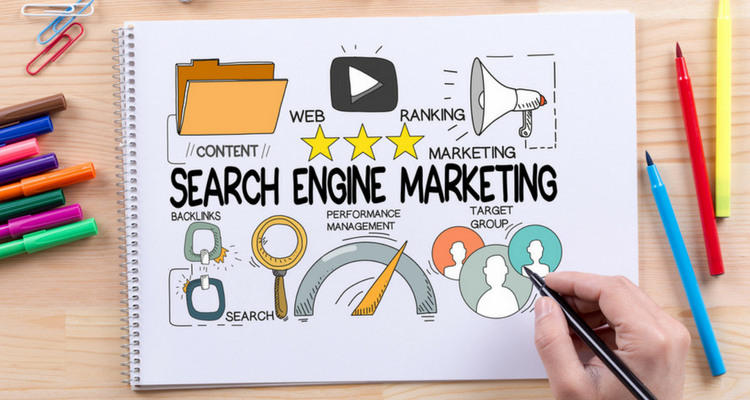We’ve all heard of user generated content (UGC), a staple of any content marketing strategy. While the power of UGC can’t be refuted, all good things eventually evolve.
So what is the natural evolution of UGC?
The answer is user created and controlled content, a form of content that has already found its footing amongst amateur content creators and will soon become the dominant form of content found online.
Content Is Transitioning to a User to User Model
Web 2.0 changed the way people looked at technology and the Internet. Consumers of content that relied solely on newsrooms and publishing houses in what was, at best, one-way communication from the creators to the consumers, realised the liberation that the newfound freedom of expression afforded them.
From YouTube, to Vine, to Snapchat stories, the people who were once passive content consumers have been using these platforms to create dynamic, engaging content that enthrals tens of thousands of fellow content creators.
Using the UGC model, marketers would attempt to leverage this content and their creator’s profiles. Even news publishers utilise UGC that captures an event to feature in their content in order to give more dimension to the news they are reporting on.
However, while this is an effective strategy for now, it has relegated traditional content publishers to the role of content moderators, whilst the traditional consumers have outgrown their formerly passive role and elevated themselves to the premier status of content creator.
In fact, we’re now at the event horizon of traditional media and publishers fighting to remain relevant in a space saturated by user created and controlled content.
The Future of User Created and Controlled Content
Google has been making great strides in their mission to answer search queries with with featured snippets and videos. Sooner rather than later, the search engine giant will be answering questions with their own content, most likely without linking to larger articles.
This change in the online landscape, particularly when it comes to content discovery, will undoubtedly allow user created and controlled content (UCCC from hereon) to flourish as an alternative for discovering dynamic media.
Content Curation and the Beginning of User Control
Let’s have a look at two of the most popular content platforms operating right now; Netflix and Spotify, both of whom operate as content moderators.
On the surface the model these two use seem traditional; content creators (filmmakers and musicians) develop media which is distributed by an online platform to an audience. Just like television and the radio right?
Well, not quite so.
The key difference to consider now is that the audience has a degree of control over the content offered to them, effectively curating their own content experience with the moderators learning from their behaviour to serve similar content in the future. Users pick and choose which music to feature on their Spotify playlists, just as they curate their viewing experience by creating watch lists on Netflix.
Consider the accounts you follow on Instagram. You chose those accounts based on any number of factors – the subject matter of their content, the quality of the content, the like-ability of the person who presents themselves on the account and how relevant their content is to your interests.
In essence, you curated your own content experience.
Curating content is a proactive action, one that places a great deal of emphasis on the overall experience from engaging with content. Sure, you can choose which news you read or which shows you want to watch, but it lacks the immersive experience that curating digital content provides.
Curation allows a person to become more engaged and dedicated to the content they’ve chosen. In essence, they have added a new dynamic to the content available to them through their curation process.
Of course curation is only one part of UCCC, the true star of this model is user to user sharing and promotion.
Storytelling, Sharing and Vine
People love videos – and their passion is on the rise. By 2019, it is estimated that over 80% of all consumer-generated internet traffic would be video. And it’s not just YouTube – phenomena such as Vine, Snapchat, Instagram stories and Facebook Live have redefined the boundaries of what is possible in real time, in terms of reach and connectivity across the globe.
While content creators have utilised Snapchat and Instagram (and to some extent Facebook) to share fresh, unique content with their audiences, the true champion of user created videos was Vine.
Vine, more than any other video platform, proved that anyone could create memorable content and share these gems with a global community of like-minded content creators. There was no agenda, no bottom line, no ROI to dictate how the content was created.
These 6 second, looped videos were created to capture genuine creativity and the key function of the platform was to make this content available to everyone. A simple model, but one that allowed Vine to acquire 200 million active users in two years.
Ironically enough, a lot of this content that was intended for short term use has become evergreen, even becoming the cornerstones of the new type of content that will rule the roost online.
So Why Does Vine Content Matter When It Comes to UCCC?
Essentially, the rapid rise of Vine signalled how traditional content like television and film lacked the unique storytelling experience and shareability of user created and controlled content.
Vine content was made to be shared immediately to a global audience who could consume it quickly on their mobile device and share it within 20 seconds. Consider the model I mentioned earlier, Vine the app is the content moderator, a platform used by millions of content creators.
Comparatively let’s look at one of the most critically acclaimed and commercially adored television series of the last decade, Breaking Bad. The series finale attracted 10.3 million television viewers in the US. While this is no paltry effort, it can’t compare to 200 million active users constantly uploading, sharing and promoting content.
In the wake of Vine’s demise, Instagram’s platform for video content continues to be the best space for user to user interaction. Whereas before people would blog about their experiences, anyone can now reach more of their contemporaries with dynamic, real-time content.
We’re not too far now from the day when even Netflix becomes obsolete in the wake of short video content that can be easily consumed by users on mobile devices.
Can UCCC and Marketers Coexist Peacefully?
The short answer is yes. However, it will take some out of the box strategies for marketers to make their brand stand out.
Yes UGC campaigns can still be implemented, but at the end of the day UGC will only be a half measure. Creative, dynamic content tailored for specific platforms is what marketers can use to prove they are aware of how people are now communicating with each other online.
Possibly the easiest way to integrate UCCC into your existing marketing framework is to use it as a way to grow your email subscriber list by using a large scale branding campaign. Creating valuable content is one of the best ways to grow your email subscriber list.
For example, if you run a SAAS business, have your top experts create engaging videos on their platform of choice to on a topic they can speak at length on. By consistently engaging with other users, your team can become trusted authorities at the forefront of online conversations relevant to your service.
While this kind of strategy has its roots in influencer strategies we use currently, this type of UCCC is far more overt in terms of a brand speaking through a mouthpiece to an audience. In this case your brand will become another user, one that has to instigate, inspire, and attract other users to your conversation.
So when you’re creating your next campaign, take a closer look at where and how your audience are communicating with each other, and devise a clever strategy to join that conversation.
For further reading and tips, check out these Marketing.com.au articles:
- Will IGTV Change the Face of Video Marketing Forever?
- How Website Content Helps With SEO
- How to Build a Profitable Business Using Social Media and Content Marketing
- The Definitive Content Marketing Checklist to Drive Leads
- How Many of These Video Marketing Mistakes Are You Making?
Shayen de Silva
Latest posts by Shayen de Silva (see all)
- Why the Future of Content Will Be User Created & Controlled - November 16, 2018








